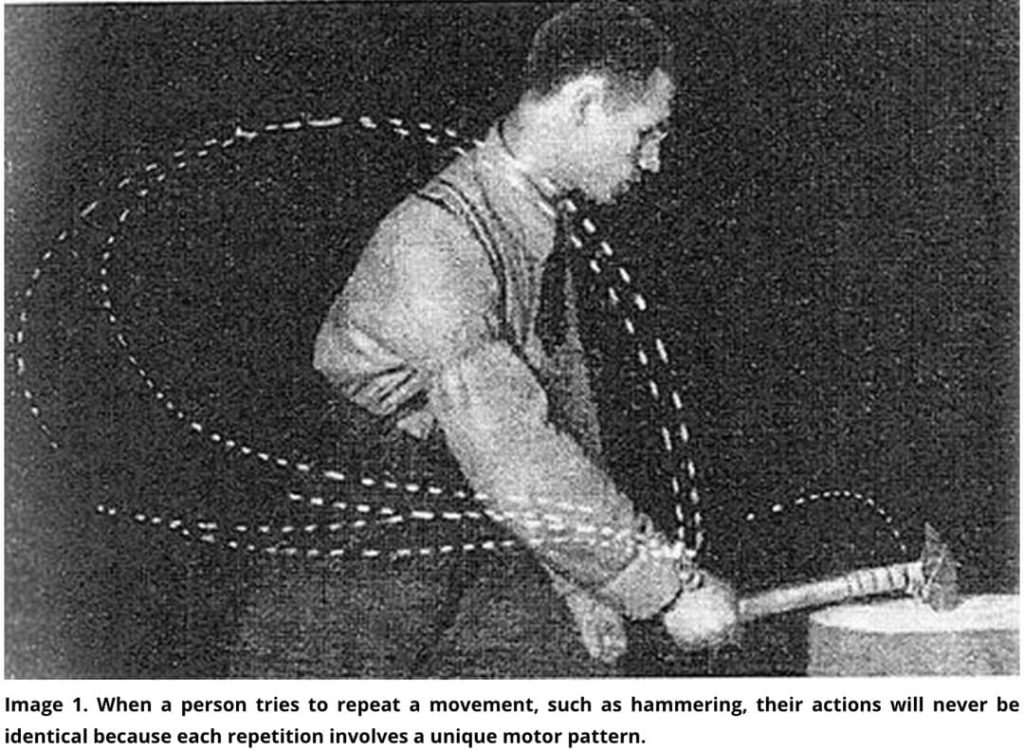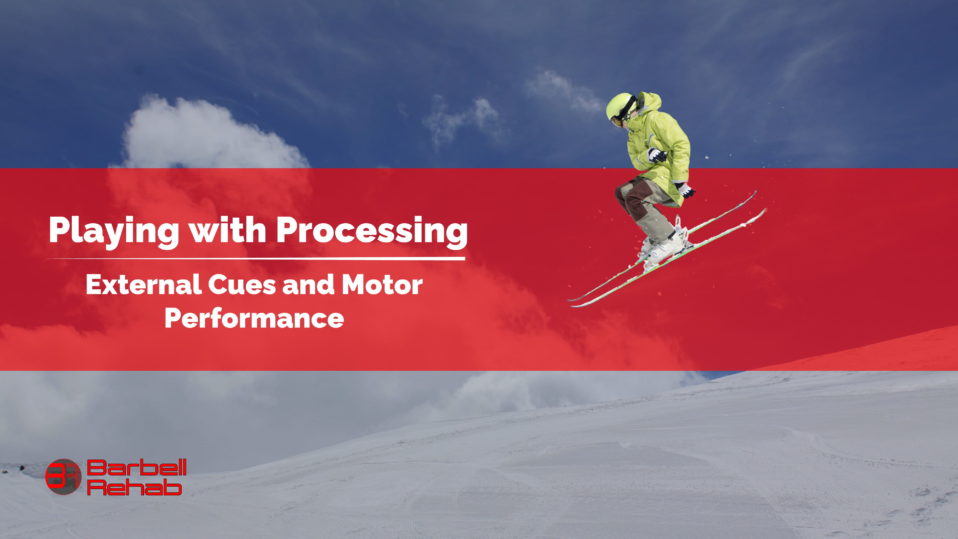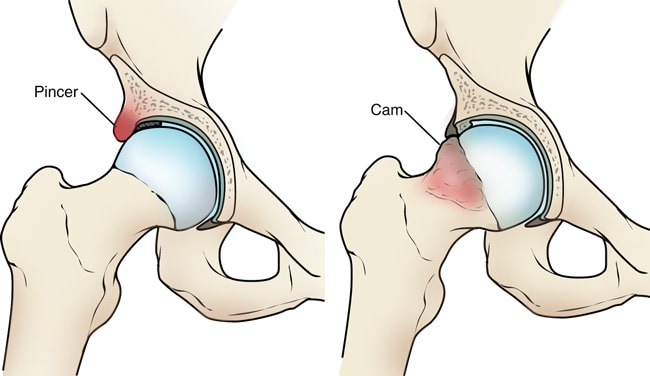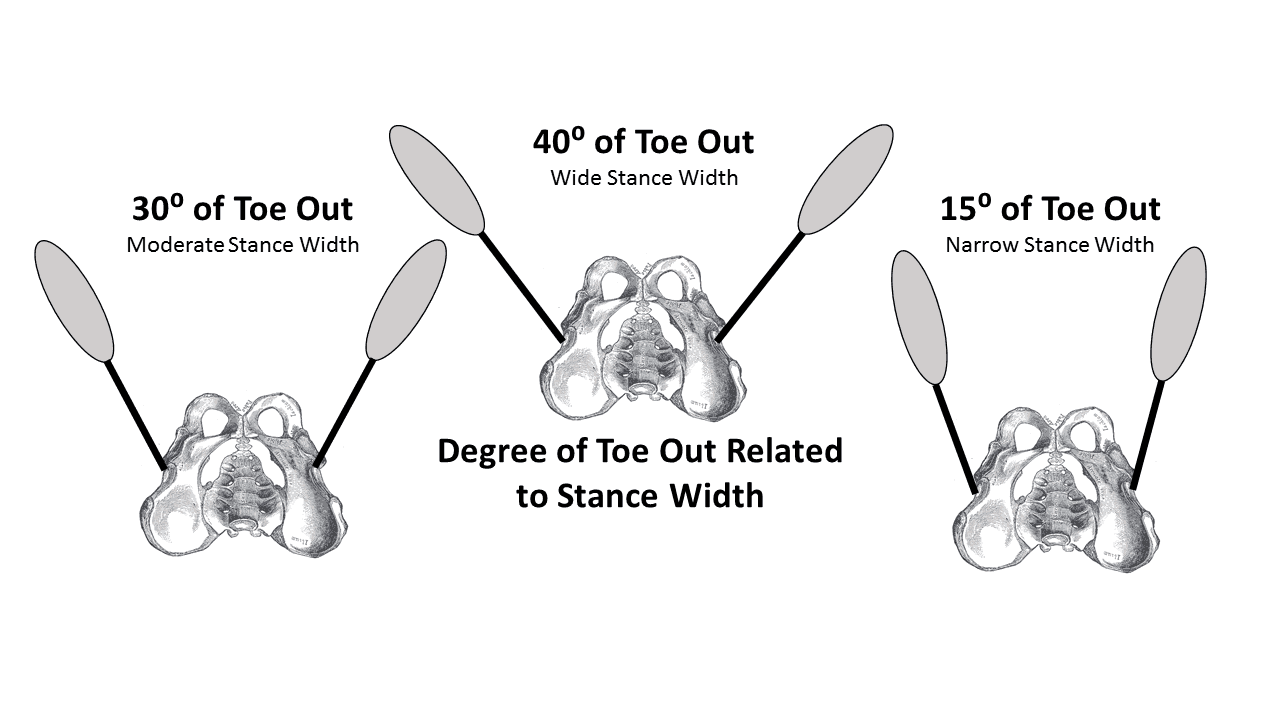“Playing with processing” is one of my favorite quotes in the rehab and training world which I first encountered from the work of the incredible physiotherapist, Louis Gifford. It is my understanding that Gifford was describing the way various treatments can all be helpful, due to the common denominator of them targeting attention and producing a new output based on novel inputs. As I was reflecting on the role of cueing for motor learning and performance, this “playing with processing” quote kept returning to me, as the research summarized below continues to highlight the powerful impact that simply modulating attention can have on processing and subsequent movement efficiency.
How Do We Best Coach Movement?
As coaches and clinicians, motor learning and skill acquisition are high value targets while working in the trenches with patients and clients pursuing the goals of movement efficiency and performance. But… how do we best coach movement?
When teaching the barbell back squat for the first time, what is the best approach to coaching an efficient movement pattern? Over the past 15 years or so, mounting evidence has emerged offering guidance to these exact questions.
Internal vs. External Cueing and Motor Performance
If you’ve explored any of the coaching and cueing research already, the name Gabriele Wulf should sound familiar. In 1998, Dr. Wulf published a seminal paper exploring the effects of manipulating attention on a motor task through different cues (1). This was the first study examining the role of internal versus external focus on performance. The experiment was set up using a ski-simulation task, where participants were told to “exert force on the outer wheels” or “exert force on the outer foot” of the ski-simulator compared to no instructions for the control group. All 3 groups of participants practiced the task on 2 consecutive days and performed a retention test on Day 3. The group that received the subtly different cue of “exert force on the outer wheels” demonstrated superior learning and performance compared to the other two groups. By subtly changing the instructions from focusing on the “outer foot” to the “outer wheels”, Dr. Wulf shifted participants attention from internally to externally directed and as Robert Frost said, “that made all the difference”.
Numerous studies examining various contexts, tasks and sports have followed over the years confirming the benefit of externally versus internally directed attention. We now have evidence confirming the superiority of external cues on everything from balance and postural control, plyometric, strength and agility tasks, sprinting and a plethora of sport specific cues (2). But why are external cues so much more effective?
Benz et al (2) explore this question in their 2016 editorial stating,
“The effects of attentional focus on sport performance can be explained through the constrained action hypothesis (CAH), which states that directing attention externally allows the motor control system to operate under non-conscious automatic processes by which movement occurs reflexively, leading to superior performance outcomes. According to the CAH, when attention is directed internally, the motor control system operates under consciously controlled processes (i.e., explicit monitoring), potentially invoking working memory, which constrains the motor system, leading to less reflexive and fluent movement patterns and poorer performance outcomes compared with an external focus of attention.”
The Degrees of Freedom Problem and Motor Programs
This brings us to another pioneer in the field, Nikolai Bernstein. Bernstein was a Russian physiologist interested in movement coordination of complex systems. In 1967, Bernstein described the challenge involved in acquiring and coordinating new perceptual-motor skills involving multiple joints as the “degrees of freedom problem”. In a 2020 editorial (3), Rob Gray offers insight by describing Bernstein’s “stages of learning” solution to the degrees of freedom problem:
“Bernstein (1967) proposed that how we solve this degrees of freedom problem and achieve coordination depends on the stage of learning. When we are first learning a new skill, he proposed that the most effective solution will involve “freezing” degrees of freedom. Freezing essentially involves reducing the number of potential movement solutions available (in other words, reducing the number of degrees of freedom) to simplify the choice problem. There are two ways Bernstein proposed that this would occur. The first involves rigidly fixing separate degrees of freedom by not using particular joints or muscles during movement. For example, a person learning to swing a bat might choose to lock their wrist, and not change its angle during movement. Obviously, if a body part is held rigid and fixed, it is no longer a degree of freedom in movement so the total number of potential solutions has been reduced.”
Todd Hargrove eloquently describes the way we assemble “motor programs” as additional solutions to dictate the actions of all joints and muscles involved in a new movement in his 2019 book, Playing with Movement (4):
“Bernstein showed this top-down model (motor programs) could not fully account for dexterous (improvisatory skill) movement, which always involves novel elements from which the brain couldn’t possibly have any prior programs. Consider the simple act of writing your signature in different ways- one on a check, the other on a blackboard, the other on a blackboard with a towel pinned under your writing arm. The results will be similar, even though the required muscle contractions and joint movements will be completely different, and some will have never been done before. The first signature is done mostly by the wrist and fingers, the second by the shoulder, and the third by the trunk and legs. The only common element is the intention to create the result. The intention comes from the higher levels of the brain, but the intelligence that executes this intention is widely distributed all over the body, emerging from interactions between muscles, joints, sensations, reflexes, and feedback from the environment. Through this bottom-up process of self-organization, the final motor pattern will be “soft-assembled” at the moment of execution. Thus, skilled movement involves a kind of “motor wits,” or ability to improvise new solutions on the spot.”
Enter Movement Variability. How Much is Enough?
This leads us into movement variability. Bernstein describes the ability of movement experts to be able to adapt their coordination patterns through various degrees of freedom to accomplish the same goal in subtly different ways. He calls this “repetition without repetition” and uses the example of a skilled blacksmith, who will display subtle changes to his swing but consistently strikes his target.

Essentially, there is a balance regarding variability between experts and novices. Too much variability is inefficient and too little is rigid, both of which are often observed with novices. However, a constrained amount of variability, where the nuances of the movement are diversified within a small to moderate range while maintaining a consistent outcome is most optimal and observed in experts.
Stergiou and Decker (5) describe movement variability such as,
“Far from being a source of error, evidence supports the presence of an optimal state of variability for healthy and functional movement. This variability has a particular organization and is characterized by a chaotic structure. Deviations from this state can lead to biological systems that are either overly rigid and robotic or noisy and unstable. Both situations result in systems that are less adaptable to perturbations, such as those associated with unhealthy pathological states or absence of skillfulness.”
Optimizing Motor Skill and Performance
So how does cueing really optimize motor skill and performance in the context of coordination, degrees of freedom and movement variability? Well, research shows that external cueing can enhance the “timing of agonist and antagonist muscle activation, promoting decreased co-contraction at inappropriate times” along with “reducing antagonist muscle activity during motor skill execution and overall muscle activation while concurrently enhancing dynamic motor skill performance.” (2).
So, using externally directed focus can decrease the expected “rigidity” that the motor system will often adopt when learning a new movement to help solve the degrees of freedom problem. It may do this by utilizing an existing motor pattern that is adequately similar, to establish an association or “template” to sculpt the new movement pattern from. This helps to accomplish the new movement task more efficiently and expedites the motor learning process via associating the familiar pattern with the new, desired one. This can often be best leveraged using analogies as cues which we will discuss later.
Why External Cues vs. Internal Cues?
Research also demonstrates that providing internal cues actually has a depressing effect on motor learning that counteracts this normal “associative process” as demonstrated by observing that withdrawal of internal cues can improve performance to match those of an external cue group in the same study (6).
A recent meta-analysis (7) was published by Chua et al. in 2021 looking at over 100 studies on internal versus external cueing and concluded,
“Overall, the meta-analytic results are consistent with prior narrative reviews and indicate that an external focus is superior to an internal focus whether considering tests of motor performance or learning, and regardless of age, health condition, and level of skill expertise.”
The authors classify the benefits of external cues into three main contexts:
Effectiveness of movements and their outcomes, reflected as:
- the accuracy with which a target is hit in tasks involving throwing or hitting objects
- deviations from a balanced position or time in balance
- quality of movement form
- or musical performance as determined by kinematic measures or expert ratings, and many others.
Efficiency of movements performed, expressed as:
- operationalized as reduced oxygen consumption for a given task
- reduced muscular activity and co-contraction
- greater movement fluidity
- or greater sustainability of motor activities such as weightlifting
Automaticity and control of movements, measured by:
- dual-task performances
- mean power frequency of movement adjustments
- sample entropy
- or jerk
They go on to describe some additional benefits of external attentional focus such as; “neuromuscular and neural underpinnings of movement effectiveness, efficiency, and automaticity, including muscular activation or electromyographic (EMG) activity, cortical activity, and corticospinal modulation.”
Benz et al 2016 (2) also mentions “promotion of phasic heart rate deceleration just before performing a motor skill and reduction in heart rate during physical exertion during a variety of activities.”
All this should lead us to the conclusion that external cueing is pretty awesome… BUT, are all external cues created equal?
Are All External Cues Created Equal?
Chua et al (7) discuss evidence on the “distance effect” which demonstrates that increasing the distance of the external focus from the performer’s body, “perhaps because they are more easily distinguishable from body movements,” can increase the advantage of the external focus.
The authors discuss an example of a golfer displaying greater accuracy hitting golf balls “when the focus was on the ball trajectory and landing point (distal external focus) compared with the club (proximal external focus).” The distance effect can also increase the automaticity in movement control, facilitate better focus on a singular goal which can enhance motivation, create greater “brain-mind clarity” to reduce distractions and “noise”, and limit self-sabotaging thoughts and judgements that are shown to more frequently accompany an internal focus.
To further explore the nuances of cueing, let’s turn to work done by Nick Winkelman, author of the renowned book (8), The Language of Coaching. I’ll try to summarize some of my key take-a-ways from his book here, but I’d recommend anyone interested in this topic read it firsthand.
When considering an optimal cue, Winkelman emphasizes the importance of choosing the right cue for the right person. Due to the uniqueness of each individual, people will resonate with different “words that move”. Therefore, you can start by picking a cue you believe will work best to teach or correct a movement, but need to be able to refine these quickly if they are not eliciting the intended result you’re seeking.

Padlock analogy for the application of the 3D cueing model. The Language of Coaching (2021).
In order to create optimal cues, Winkelman describes the "3D cueing model” using a padlock analogy. In this model, you first choose a descriptive verb, followed by a directional preposition and finally a distance noun. For a dumbbell bench press, Winkelman uses the example of, “focus on pushing the dumbbells away from the bench.”
Once you’ve found your optimal cue for a given movement, Winkelman describes a loop to deliver the instructions for optimal learning:
- Describe the movement (internal language can be used here)
- Demonstrate it
- Cue it (using chosen cue from the 3D model)
- Do it
- Debrief it (consider feedback from both the athlete and coach)
He also describes a “continuum of cues” ranging from narrow internal, broad internal, hybrid, close external and far external, each shifting the focus more globally. However, he does make a point to note that there is a time and place for internal cueing which shouldn’t be dismissed, especially when initially describing a movement. It can be helpful to describe a new movement in terms of “body-oriented words to explain key features of the movement.” However, he makes this note in the context of the initial movement description and is still leveraging external cues when it’s time to actually execute the movement and leave the athlete with one key phrase.
I also really appreciated his discussion on analogies to further enhance the meaning of an external cue, such as “stay long and hinge as a teeter-totter hinges on a fixed point” to describe a Romanian deadlift. Using analogies can be a great way to leverage a mental model and memory to better convey the movement we’re seeking.
When All Else Fails...We Have Options!
When a cue just isn’t working we still have other options. First, we can say it differently by plugging different terms into the padlock. We can also add further imagery with an analogy or conversely reduce cognitive load by saying less. In this same vein, it’s important to mention auditing how many cues we provide. As novice coaches and clinicians, we can often become overzealous with trying to make a movement look as optimal as possible, as soon as possible. This can lead us to trying to cue a number of technique modifications all at once.
To illustrate this effect, Winkelman describes a story about Albert Einstein learning to golf. As the story goes, Einstein hires an instructor to teach him the intricacies of swinging a golf club. The instructor takes him to the range, tees up a ball and enthusiastically begins describing the nuances of the movement he is looking for during the swing, keeping loose at the ankles, weight shifting during the backswing, the rotation of the trunk and arc of the club, the movement of the wrists upon contact, and a number of other points. Einstein, being the genius he is, interrupts the instructor shouting, “stop!” and walks over to a basket of balls, grabbing as many as he can. He tosses them towards the instructor and says, “catch!”, but the instructor is only able to actually snatch one or two of the balls. In grand allegorical fashion, Einstein says, “just as you cannot catch all of those golf balls, I cannot catch all of these cues, give me one thing to focus on at a time.”
What About Contextual Interference?
This story highlights the limitations in attention that we all have as humans and is a valuable message to remember to prioritize one coaching cue at a time. In the research of motor learning, we can also reinforce our cues’ effects by optimizing practice variability of the new skill, such as changing the order that a client performs that skill. This can alter what’s called “contextual interference” (CI) in the learning environment.
In a 2010 study (9), the authors define CI as “the interference in learning and performance that arises when practicing a task in the context of other tasks”. They further discuss some of the research demonstrating that higher rather than lower amounts of CI can enhance learning several sport related skills. This is often done through the use of blocked, random or progressive practice. In the above-mentioned study (9), the authors looked at learning passing skills in basketball (two hand chest, two hand overhead, single arm) which demonstrated the greatest benefits in skill acquisition with progressive variability practice (blocked practice of passes then random practice) compared to only blocked (separately practice each pass repeatedly) or only variable (practice each of the three passes randomly). Therefore, it’s important to leverage optimal practice designs once movement skills have been dialed in with our cueing to lock in the new skill and motor program.
Motor Learning and Cueing: Wrapping it Up
I’ll conclude with one final quote from Chua et al (7):
“Overall, it is remarkable how a small difference in instructions and feedback directing the performer’s concentration can have a significant influence on immediate performance played out in the coordination of brain and limbs, and the efficiency with which movements are executed, as well as longer-term effects on learning.”
So there you have it… Motor learning can be tough, between controlling for all our degrees of freedom, orchestrating muscular agonist/antagonist coordination, modulating variability and optimizing efficiency, but luckily we have externally-directed attention via cueing on our side! Stay tuned as we discuss our favorite external cues for coaching the squat, deadlift, bench press and overhead press in a future post.
References
- Wulf G, Höß M, Prinz W. Instructions for motor learning: differential effects of internal versus external focus of attention. J Mot Behav. 1998 Jun;30(2):169-79. doi: 10.1080/00222899809601334. PMID: 20037032.
- Benz A, Winkelman N, Porter J, Nimphius S. Coaching Instructions and Cues for Enhancing Sprint Performance. Strength and Conditioning Journal: 2016 (38:1). doi: 10.1519/SSC.0000000000000185
- Gray R. Changes in Movement Coordination Associated With Skill Acquisition in Baseball Batting: Freezing/Freeing Degrees of Freedom and Functional Variability. Front Psychol. 2020 Jun 25;11:1295. doi: 10.3389/fpsyg.2020.01295. PMID: 32670156; PMCID: PMC7330175.
- Hargrove, T. R. (2019). Playing with movement: How to explore the many dimensions of physical health and performance. Better Movement.
- Stergiou N, Decker LM. Human movement variability, nonlinear dynamics, and pathology: is there a connection? Hum Mov Sci. 2011 Oct;30(5):869-88. doi: 10.1016/j.humov.2011.06.002. Epub 2011 Jul 29. PMID: 21802756; PMCID: PMC3183280.
- Wulf G, McConnel N, Gärtner M, Schwarz A. Enhancing the learning of sport skills through external-focus feedback. J Mot Behav. 2002 Jun;34(2):171-82. doi: 10.1080/00222890209601939. PMID: 12057890.
- Chua LK, Jimenez-Diaz J, Lewthwaite R, Kim T, Wulf G. Superiority of external attentional focus for motor performance and learning: Systematic reviews and meta-analyses. Psychol Bull. 2021 Jun;147(6):618-645. doi: 10.1037/bul0000335. PMID: 34843301.
- Winkelman, N. (2021). The language of coaching: The art & science of teaching movement. Human Kinetics Inc.
- Porter, J, Saemi, E. Moderately skilled learners benefit by practicing with systematic increases in contextual interference. International Journal of Coaching Science. 2010. 4. 61-71.
- Wulf G. Attentional focus and motor learning: A review of 15 years. International Review of Sport and Exercise Psychology. 2013. 6. 77-104. 10.1080/1750984X.2012.723728.
- Biryukova E, Sirotkina I. Forward to Bernstein: Movement Complexity as a New Frontier. Front Neurosci. 2020 Jun 3;14:553. doi: 10.3389/fnins.2020.00553. PMID: 32581691; PMCID: PMC7283918.
- Wulf G, Lewthwaite R. Optimizing performance through intrinsic motivation and attention for learning: The OPTIMAL theory of motor learning. Psychon Bull Rev. 2016 Oct;23(5):1382-1414. doi: 10.3758/s13423-015-0999-9. PMID: 26833314.





